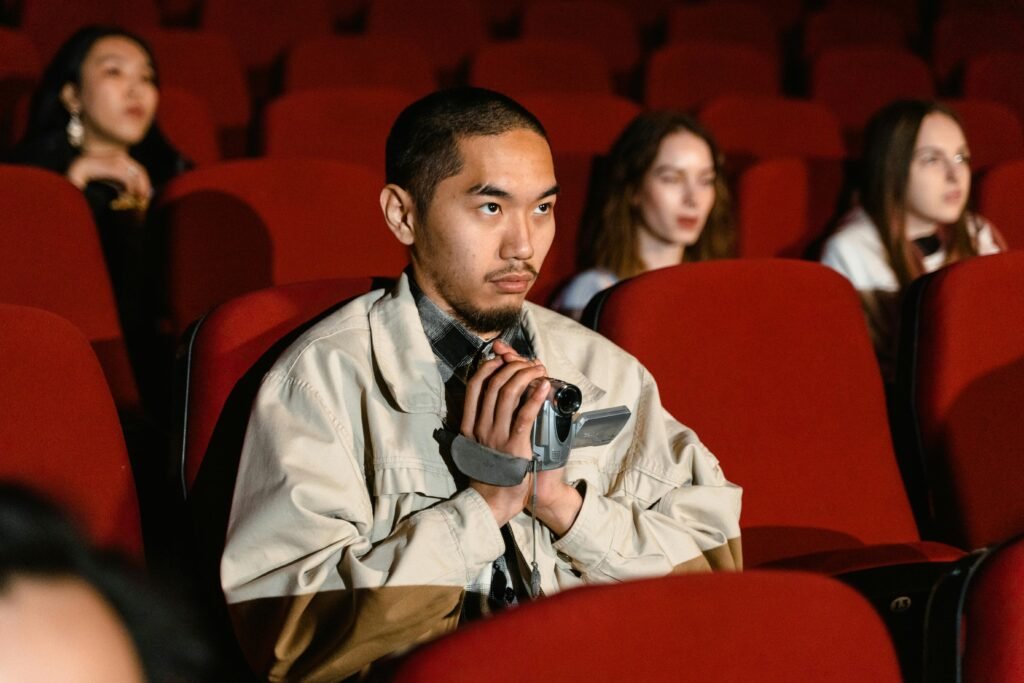
Introduction to Indirect Experience
In today’s rapidly evolving world, capturing the essence of important moments has become increasingly significant.
Often, we seek to hold onto the emotional, spiritual, or intellectual weight of events that we might not be physically present for. This is where the idea of capturing intangible experiences comes in.
By employing various meta-mindfulness practices, we can internalize the essence of moments we haven’t directly experienced.
Indirect experience allows us to embrace and preserve moments through different means.
For example, by immersing ourselves in stories; whether through books, movies, or conversations, we can connect emotionally to experiences we haven’t lived.
Narratives have a unique ability to evoke deep emotional responses, helping us understand and feel the significance of events as if we were there.
Engaging with art and music can also transport us to different times and places.
When we listen to a moving piece of music or view a powerful piece of art, we can feel the emotions and thoughts that the artist intended to convey.
This emotional resonance allows us to capture the essence of moments without physically experiencing them.
Mindfulness practices such as meditation and visualization can further enhance our ability to connect with intangible experiences.
These practices enable us to focus our attention and cultivate a deeper sense of presence, allowing us to engage with moments on a more profound level.
Visualization techniques can help us imagine and internalize experiences, making them feel more real and significant.
Another approach is through intellectual engagement.
By researching and studying events, we can gain a deeper understanding of their nuances and complexities.
This intellectual exploration allows us to grasp the essence of moments without being present.
Documentaries, interviews, and historical accounts provide valuable insights and perspectives that help us connect with experiences from afar.
Conversations with others can also be a powerful tool for capturing intangible experiences.
By listening to others share their stories and perspectives, we can gain a richer understanding of their experiences.
This empathetic engagement allows us to internalize their emotions and insights, making their moments a part of our own understanding.
The combination of emotional, spiritual, and intellectual engagement creates a holistic approach to capturing the essence of moments.
Each method provides a unique lens through which we can view and internalize experiences, enriching our own lives in the process.
Embodying Moments Through Reflection

Reflecting on past experiences and memories can provide a powerful way to understand new moments.
By engaging in mindfulness practices, we can gain metacognitive awareness, allowing us to observe thoughts and emotions as transient events rather than identifying with them.
This increased metacognitive awareness can help us embody new moments through reflection.
Additionally, mindfulness can lead to clarity in understanding one’s values and aligning behaviors with those values.
This alignment facilitates a deeper engagement with new experiences through reflection.
Engaging emotionally with events can be achieved through storytelling or reading.
By immersing ourselves in narratives, we connect with the emotional core of an experience, making it part of our own story.
This form of emotional engagement allows us to embody moments without having lived them directly.
The stories we read or hear act as vessels, transporting us to different times and places, allowing us to feel the emotions and understand the significance of those moments.
Mindfulness also plays a critical role in fostering reflection.
Techniques such as focused breathing, body scans, and guided imagery can help center our thoughts, making it easier to engage deeply with our reflections.
This mental clarity allows us to sift through our memories and the stories we’ve heard, enabling us to draw out their essential elements and integrate them into our understanding of new experiences.
Another way to embody moments is through the practice of journaling.
Writing about our thoughts, feelings, and the narratives we encounter can solidify these moments in our minds.
The act of putting pen to paper encourages us to process and internalize these experiences, allowing us to reflect on their meaning more profoundly.
This method provides a tangible way to revisit these moments, reinforcing our emotional and intellectual engagement with them.
Additionally, reflecting through conversations with others can deepen our understanding.
Engaging in discussions about shared or similar experiences allows us to see different perspectives and gain insights we might not have considered.
This exchange of ideas and emotions helps to further internalize and embody the essence of these moments.
Art can also be a reflective medium.
Creating art inspired by the moments we’ve heard about or read can help us process and embody these experiences.
The creative process allows us to explore our emotional and intellectual responses to these moments, making them a part of our own lived experience.
In essence, embodying moments through reflection involves a multifaceted approach that combines mindfulness, storytelling, journaling, conversations, and art.
These methods enable us to connect deeply with experiences we haven’t lived, enriching our understanding and appreciation of the world around us.
Capturing Spiritual Aspects

Mindfulness practices such as meditation and visualization can help us feel a deep connection to moments we haven’t lived.
Participation in mindfulness based stress reduction (MBSR) has been linked with positive brain changes, fostering adaptive self representation and emotional regulation.
These changes can make us feel more connected to moments on a spiritual level.
Art and music also play crucial roles in evoking spiritual emotions.
When we listen to music or engage with art that resonates with an experience, we tap into the intangible emotions and spiritual essence of that moment.
These mediums allow us to explore and capture the deeper, often spiritual, dimensions of experiences.
Attending religious or spiritual ceremonies can also help us capture spiritual aspects of moments.
Even if we don’t practice a particular religion, witnessing rituals, prayers, or meditative practices can open our minds to new perspectives and feelings.
These shared experiences can foster a sense of community and collective spirituality, helping us internalize moments that are significant to others.
Nature offers another powerful avenue for capturing spiritual aspects.
Spending time in natural settings, whether through hiking, camping, or simply walking in a park, can evoke a sense of peace and connection to something greater than ourselves.
The tranquility and beauty of nature can help us tap into spiritual feelings, allowing us to reflect on moments we haven’t directly experienced but can feel deeply.
Literature also serves as a portal to spiritual experiences.
Reading sacred texts, philosophical writings, or even novels with strong spiritual themes can transport us to different states of mind.
These works often explore universal themes such as love, loss, and the search for meaning, enabling us to connect with the spiritual essence of moments described within their pages.
Engaging in acts of kindness and compassion can be another pathway to capturing spiritual aspects.
By helping others, we can experience a profound sense of connection and fulfillment.
These actions often carry a spiritual weight, helping us to internalize and reflect on the deeper meaning of these moments.
Practices like yoga and tai chi blend physical movement with mindfulness, offering another way to connect spiritually.
These disciplines emphasize the unity of body and mind, helping us to feel present and attuned to our inner selves.
Through consistent practice, we can capture the spiritual essence of these moments, enriching our lives with a sense of balance and harmony.
Incorporating these various practices into our daily lives can help us to capture the spiritual aspects of moments we haven’t directly experienced.
Whether through mindfulness, art, nature, literature, acts of kindness, or physical practices, we can explore and internalize the spiritual dimensions of life, gaining a deeper understanding and appreciation for the intangible experiences that shape our world.
Intellectual Engagement Without Direct Experience

Intellectual engagement with moments can occur through research and study.
By understanding the nuances of an event through diligent investigation, we can capture its essence without being present.
Mindfulness training has been shown to improve sustained attention, aiding both novice and experienced meditators.
This improvement allows us to focus deeply on studying and understanding new experiences.
Documentaries and interviews serve as educational tools that bring us closer to the reality of moments we haven’t lived.
They provide firsthand accounts and visual depictions, making us feel intellectually engaged.
Additionally, mindfulness training can help buffer against decreases in working memory capacity during high stress periods, enhancing our ability to process and internalize complex information about events.
Reading is another powerful method for intellectual engagement.
By diving into books, articles, and research papers, we can explore different perspectives and gain a deeper understanding of experiences we haven’t lived.
Literature can provide comprehensive insights and detailed analyses, helping us grasp the complexities and subtleties of various moments.
Attending lectures and seminars also offers an avenue for intellectual engagement.
These events often feature experts who share their knowledge and insights on specific topics, providing a deeper understanding of experiences and events.
The interactive nature of these gatherings allows us to ask questions and engage in discussions, further enriching our intellectual grasp of the subject.
Engaging in discussions with others can provide additional layers of understanding.
By participating in debates, study groups, or even casual conversations, we can hear different viewpoints and challenge our own assumptions.
This exchange of ideas helps us to critically analyze and internalize the essence of moments we haven’t lived.
Another method is through writing and reflecting on what we’ve learned.
Keeping a journal or writing essays about our research findings can help solidify our understanding.
The act of writing encourages us to organize our thoughts and articulate our insights, making the experience more tangible and memorable.
Online courses and educational platforms offer another way to intellectually engage with moments.
These resources provide structured learning experiences that cover a wide range of topics, allowing us to study and understand events and experiences in depth.
The convenience of online learning also makes it accessible to a broader audience.
By incorporating these various methods, we can intellectually engage with and understand the essence of moments we haven’t directly experienced.
Mindfulness practices, documentaries, reading, attending lectures, engaging in discussions, writing, and online learning all offer valuable tools for this purpose.
These approaches not only enhance our intellectual capacity but also enrich our overall appreciation and understanding of the world around us.
Examples of Indirect Moment Capture

Consider the case of experiencing a historical event through documentaries.
By watching carefully crafted documentaries, we can relive moments in history with vivid detail and emotional impact.
The narratives and visuals presented enable us to capture the essence of these moments, even if we were not there.
Another example involves analyzing a friend’s experience.
By listening to a friend recount a significant event in their life, we can learn and grow personally.
This method allows us to capture the essence of their experience indirectly, adding depth and understanding to our own lives.
Mindfulness training can lead to improved behavioral regulation, which further supports our ability to internalize and reflect on others’ experiences.
Engaging with literature offers another means of capturing moments indirectly.
By immersing ourselves in books that vividly describe events, we can feel the emotions and understand the significance of experiences we haven’t lived.
For instance, reading a novel set during a historical period can transport us to that time and place, allowing us to internalize the atmosphere, struggles, and triumphs of the characters.
Artistic expression also provides a way to connect with intangible experiences.
Viewing a powerful painting or listening to a moving piece of music can evoke emotions and thoughts that mirror the artist’s intent.
This connection allows us to feel the weight and essence of the moment depicted, even though we weren’t physically present.
Participation in mindfulness based stress reduction (MBSR) practices has been shown to foster emotional regulation and adaptive self representation, enabling us to connect with experiences on a deeper level.
When we engage in visualization techniques during meditation, we can imagine and internalize moments, making them feel more significant and real.
Conversations with individuals who have experienced significant events can be profoundly enlightening.
By listening to their stories and empathizing with their emotions, we gain a richer understanding of their experiences.
This empathetic engagement helps us internalize their moments, adding depth to our own understanding.
Educational tools such as documentaries and interviews offer valuable insights into events we haven’t lived.
They provide firsthand accounts and visual depictions, helping us feel intellectually engaged.
Additionally, mindfulness training can help buffer against decreases in working memory capacity during high stress periods, enhancing our ability to process and internalize complex information about events.
Nature also serves as a powerful medium for capturing moments.
Spending time in natural settings can evoke a sense of peace and connection, allowing us to reflect on experiences we haven’t directly lived.
Conclusion and Reflection

The journey of capturing the essence of moments without direct experience is deeply enriching and multifaceted.
By employing techniques such as reflection, spiritual exploration, and intellectual engagement, we can internalize and appreciate moments we haven’t physically lived.
This endeavor involves the integration of various practices that allow us to connect emotionally, spiritually, and intellectually with intangible experiences.
Mindfulness practices, such as meditation and visualization, play a crucial role in this process.
They help us cultivate a deeper sense of presence and awareness, making it easier to engage with moments on a profound level.
These techniques allow us to imagine and internalize experiences, making them feel more real and significant.
Art and music are also powerful tools for capturing the essence of moments.
They evoke deep emotional responses and help us connect with the thoughts and feelings of the creators.
This connection allows us to understand and feel the significance of experiences conveyed through these mediums.
Similarly, literature and storytelling transport us to different times and places, enabling us to internalize the atmosphere, struggles, and triumphs of the characters.
Engaging with educational tools such as documentaries and interviews offers valuable insights into events we haven’t lived.
These resources provide firsthand accounts and visual depictions, making us feel intellectually engaged.
Reading books, articles, and research papers allows us to explore different perspectives and gain a deeper understanding of various moments.
Conversations with others also enhance our ability to capture intangible experiences.
By listening to their stories and empathizing with their emotions, we gain a richer understanding of their experiences.
This empathetic engagement helps us internalize their moments, adding depth to our own understanding.
Nature serves as another powerful medium for capturing moments.
Spending time in natural settings can evoke a sense of peace and connection, allowing us to reflect on experiences we haven’t directly lived.
The tranquility and beauty of nature help us tap into deeper feelings, fostering a sense of spiritual connection.
Incorporating these various methods into our daily lives can help us capture and internalize the essence of moments we haven’t directly experienced.
Whether through mindfulness, art, literature, conversations, or nature, we can explore and appreciate the intangible experiences that shape our world.
By embracing these practices, we open ourselves to a richer, more nuanced understanding of life, allowing us to grow personally and emotionally.
